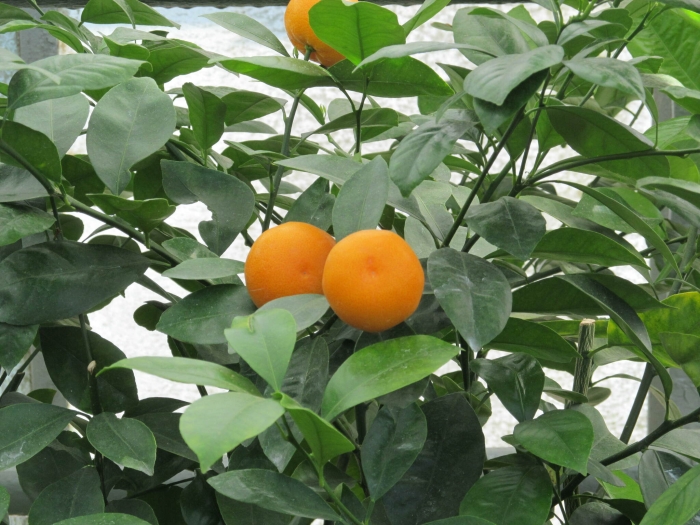Calamansi
(Citrus ×microcarpa)
Calamansi (Citrus ×microcarpa)
/
/

© Alex Sosnovshchenko
CC BY 4.0
Image By:
© Alex Sosnovshchenko
Recorded By:
Copyright:
CC BY 4.0
Copyright Notice:
Photo by: © Alex Sosnovshchenko | License Type: CC BY 4.0 | License URL: http://creativecommons.org/licenses/by/4.0/ | Uploader: alex_sosn | Publisher: iNaturalist |

























Estimated Native Range
Summary
Citrus ×microcarpa, commonly known as Calamansi or Philippine Lime, is a citrus hybrid predominantly cultivated in the Philippines and is also found in other parts of Southeast Asia, southern China, Taiwan, and in warmer regions of the United States such as Florida and California. This evergreen tree is typically grown as a small to medium-sized plant, reaching up to 20 feet in height, with a dense, rounded canopy. Calamansi is native to tropical and subtropical forest margins and thrives in humid environments.
The Calamansi tree is notable for its small, green to yellow-orange fruits, which are round and measure 1-2 inches in diameter. The fruits are sour and are often used in various Philippine condiments, beverages, and dishes, similar to how lemons and limes are used in other cuisines. The tree flowers throughout the year, with peak flowering seasons in the Philippines occurring from July to September. The flowers are white and fragrant, adding to the ornamental appeal of the tree. In cultivation, Calamansi is valued for its ease of maintenance, compact size, and the high vitamin C content of its fruit. It is commonly used in urban and residential plantings, container gardening, and as a grafted plant on other citrus rootstocks to improve hardiness.
Calamansi requires well-drained, fertile soil, consistent moisture, and can tolerate a range of light conditions from partial shade to full sun. It is sensitive to cold and must be protected from frost. While generally pest-resistant, it can be susceptible to common citrus problems such as scale insects and citrus canker. Gardeners should be aware of its potential to develop root rot if overwatered or planted in poorly drained soils. There are no widely recognized cultivars outside the typical variety, but dwarf forms are popular for container cultivation.CC BY-SA 4.0
The Calamansi tree is notable for its small, green to yellow-orange fruits, which are round and measure 1-2 inches in diameter. The fruits are sour and are often used in various Philippine condiments, beverages, and dishes, similar to how lemons and limes are used in other cuisines. The tree flowers throughout the year, with peak flowering seasons in the Philippines occurring from July to September. The flowers are white and fragrant, adding to the ornamental appeal of the tree. In cultivation, Calamansi is valued for its ease of maintenance, compact size, and the high vitamin C content of its fruit. It is commonly used in urban and residential plantings, container gardening, and as a grafted plant on other citrus rootstocks to improve hardiness.
Calamansi requires well-drained, fertile soil, consistent moisture, and can tolerate a range of light conditions from partial shade to full sun. It is sensitive to cold and must be protected from frost. While generally pest-resistant, it can be susceptible to common citrus problems such as scale insects and citrus canker. Gardeners should be aware of its potential to develop root rot if overwatered or planted in poorly drained soils. There are no widely recognized cultivars outside the typical variety, but dwarf forms are popular for container cultivation.CC BY-SA 4.0
Plant Description
- Plant Type: Shrub, Tree
- Height: 7-25 feet
- Width: 3-6 feet
- Growth Rate: Moderate
- Flower Color: White
- Flowering Season: Spring, Summer
- Leaf Retention: Evergreen
Growth Requirements
- Sun: Full Sun, Part Shade
- Water: Medium
- Drainage: Fast, Medium
Common Uses
Edible*Disclaimer: Easyscape's listed plant edibility is for informational use. Always verify the safety and proper identification of any plant before consumption., Fragrant, Hedges, Potted Plant, Showy Flowers, Street Planting
Natural Habitat
Native to tropical and subtropical forest margins
Other Names
Common Names: Philippine lime , Calamansi
Scientific Names: , Citrus ×microcarpa, Citrofortunella microcarpa, Citrofortunella mitis, Citrus ×mitis,
GBIF Accepted Name: